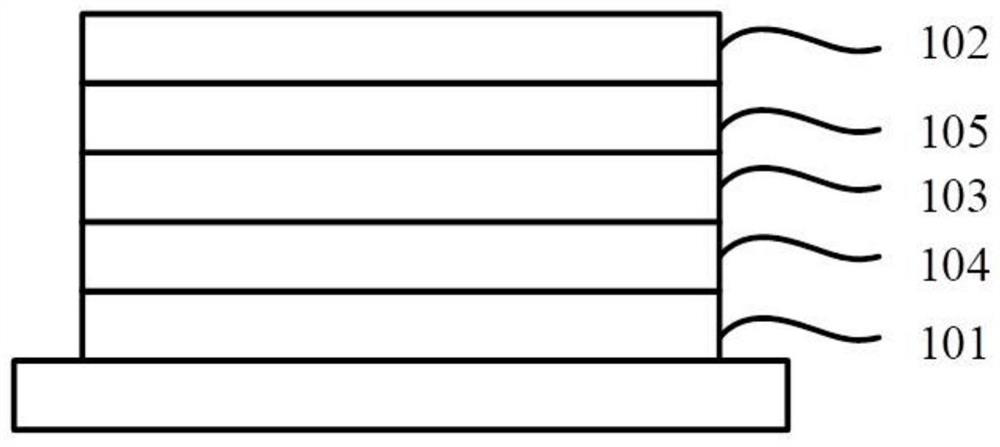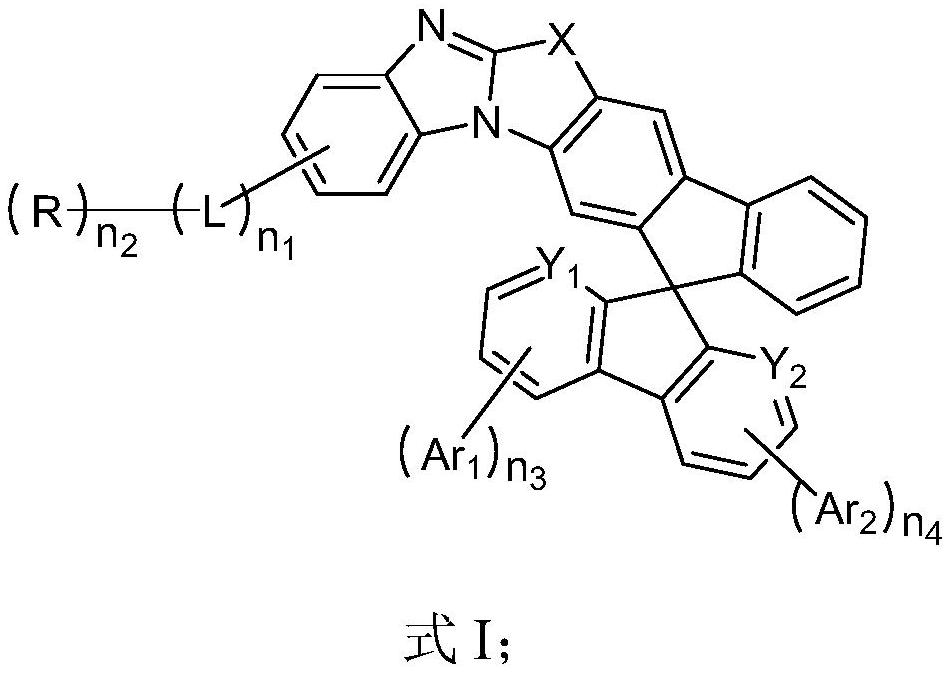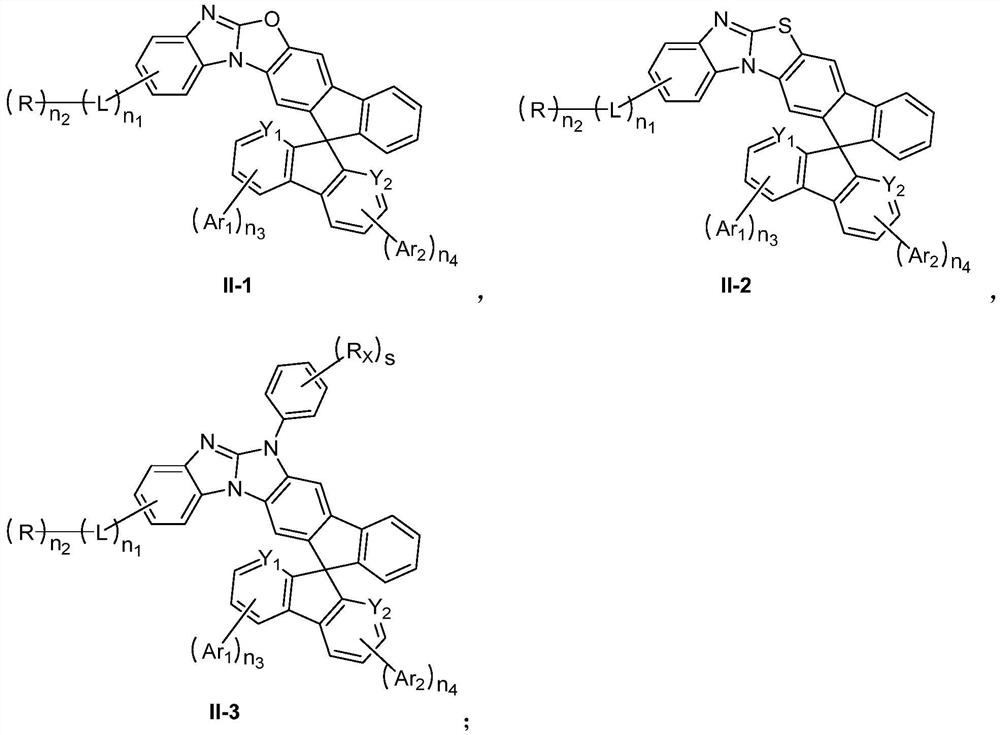Organic compound, organic electroluminescent material and application thereof
An organic compound and selected technology, applied in the field of organic compounds and organic electroluminescent materials, can solve the problems of high glass transition temperature, small concentration quenching effect, large intermolecular attraction, etc., to avoid crystallization and reduce work. Voltage and energy consumption, the effect of extending operating life
- Summary
- Abstract
- Description
- Claims
- Application Information
AI Technical Summary
Problems solved by technology
Method used
Image
Examples
preparation example 1
[0108]
[0109] Under a nitrogen atmosphere, add about 20mL of anhydrous dimethyl sulfoxide (DMSO) to the reaction flask, then add reactant a1 (5mmol), reactant 1 (5.25mmol), and cesium carbonate (15mmol) in sequence, and heat up to 120 After reacting at ℃ for 2 hours, continue to raise the temperature to 180℃ for 4 hours. Cool to room temperature, add dichloromethane (DCM) / H 2 O was extracted, and the collected organic phase was washed with anhydrous Na 2 SO 4 After drying, the filtrate was collected by suction filtration, the solvent was spun off and purified by column chromatography to obtain intermediate A-1 (yield 72%).
[0110]Characterization results of intermediate A-1: MALDI-TOF MS (m / z) obtained by matrix-assisted laser desorption ionization time-of-flight mass spectrometry: C 13 h 7 BrN 2 O, calculated: 285.97, found: 286.17.
[0111] Intermediates B-1 and C-1 were prepared according to the above synthetic route, and the raw materials, products and test r...
preparation example 2
[0115]
[0116] Under nitrogen atmosphere, add 100mL solvent (toluene:ethanol:water=7:2:1) in reaction bottle, then add reactant A-1 (4mmol), reactant 2 (4.5mmol), potassium carbonate (10mmol) successively and palladium catalyst Pd(PPh 3 ) 4 (0.2 mmol), heated to 90°C, and reacted overnight. Cool to room temperature, add DCM / H 2 O was extracted, and the collected organic phase was washed with anhydrous Na 2 SO 4 After drying, the filtrate was collected by suction filtration, the solvent was spun off and purified by column chromatography to obtain intermediate A-2 (yield 76%).
[0117] Characterization results of intermediate A-2: MALDI-TOF MS (m / z): C 19 h 11 ClN 2 O, Calculated: 318.06, Found: 318.27.
[0118] Intermediates B-2 and C-2 were prepared according to the above synthetic route, and the raw materials, products and test results are shown in Table 2.
[0119] Table 2
[0120]
preparation example 3
[0122]
[0123] Under nitrogen atmosphere, intermediate A-2 (3mmol) was added to anhydrous tetrahydrofuran (THF), stirred at -78°C to cool the reaction solution, and then 1.6M n-butyl lithium (n-BuLi, 3mmol) was added dropwise Add and keep reacting at -78°C for 2h; Slowly add reaction intermediate 3-1 (3mmol) into the low-temperature reaction solution dropwise. After the reaction is completed, add a small amount of water to quench, add DCM / H 2 O was extracted, the organic phase was collected and washed with anhydrous Na 2 SO 4 Dry, collect the filtrate by suction filtration, and spin off the solvent to obtain the crude product;
[0124] The above crude product was added to 20 mL of acetic acid under nitrogen, stirred and heated, and reacted at 120° C. for 2 h, then added 2 mL of hydrochloric acid, and heated at this temperature for 12 h. After the reaction was completed, it was cooled and extracted, and the organic phase was collected and the solvent was spun off, and pu...
PUM
| Property | Measurement | Unit |
|---|---|---|
| current efficiency | aaaaa | aaaaa |
| thickness | aaaaa | aaaaa |
| current efficiency | aaaaa | aaaaa |
Abstract
Description
Claims
Application Information
 Login to View More
Login to View More - R&D
- Intellectual Property
- Life Sciences
- Materials
- Tech Scout
- Unparalleled Data Quality
- Higher Quality Content
- 60% Fewer Hallucinations
Browse by: Latest US Patents, China's latest patents, Technical Efficacy Thesaurus, Application Domain, Technology Topic, Popular Technical Reports.
© 2025 PatSnap. All rights reserved.Legal|Privacy policy|Modern Slavery Act Transparency Statement|Sitemap|About US| Contact US: help@patsnap.com



